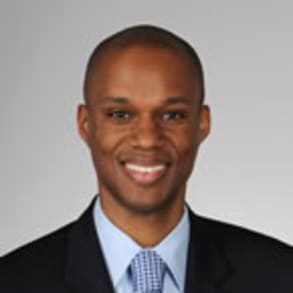Nathan C. Rowland, M.D., Ph.D., a neurosurgeon and assistant professor at MUSC, utilizes a novel, customized frameless platform to perform deep brain stimulation on a patient with essential tremor.
Related Presenters

Nathan Rowland, M.D., Ph.D., received his undergraduate degree from Morehouse College in Atlanta, Georgia, and his M.D. and Ph.D. degrees from Emory University. He completed his internship in general surgery and residency in neurological ...
Related Videos